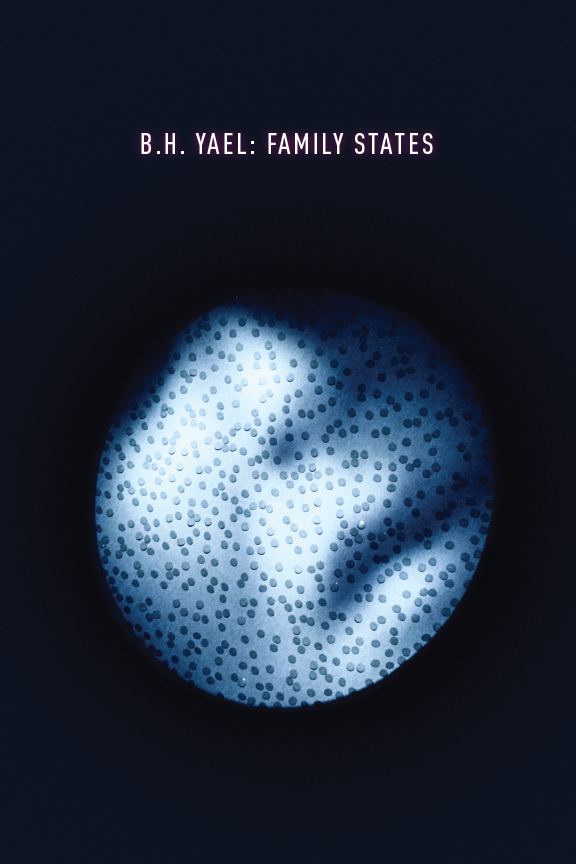b.h. Yael: Family States
Check out the beautiful volume, designed by Alena Koroleva.
Published by ConverSalon, 2021.
Contents
Introduction by Mike Hoolboom
Movies
You Belong to Me by Yann Beauvais (1986)
Jain Walks the Line by Deirdre Logue (1986)
My Mother is a Dangerous Woman by Steve Reinke (1987)
Video artist reconstructs shifting Jewish identity by Cameron Bailey (1996)
Fresh Blood by Dalia Kandyioti (1996)
Seldom by Mike Hoolboom (2000)
The Lonely Lesbian by Ali Kazimi (2002)
Pacts by Rebecca Garrett (2003)
Triskaidekaphobia by Niko Block (2003)
the fear series by b.h. Yael (2005)
Even in the Desert by Lia Tarachansky (2006)
Deir Yassin Remembered by Robert Massoud (2006)
Deir Yassin Unremembered by Vimeo (2020)
Palestine Trilogy by Nadia Habib (2006)
Trading the Future by Richard Fung (2008)
Reading Belin in Berlin by Clint Enns (2017)
Lessons for Polygamists by Kerri Sakamoto (2017)
Lessons for Polygamists by Dennis Day (2017)
The Colour of Butter by b.h. Yael (2019)
Isolation ABC by Deborah Root (2020)
BDS, a letter to my tribe by b.h. Yael (2020)
Collaborations
The Genesis Story by Brian Dedora (1985)
Spontaneous Combustion by Caroline Seck Langill 1989-93
Approximations: The Mission by Johanna Householder (2000)
Approximations: December 31 by Johanna Householder (2000)
Approximations: Next to Last Tango by Johanna Householder (2002)
Verbatim by Johanna Householder (2005)
Fuelling the Fire of Youth Rebellion by Judy Rebick (2001)
(of)fences by John Greyson (2001)
Pacts by Rebecca Garrett (2003)
Jewish Women’s Committee to End the Occupation by Amy Gottlieb (1989-2007)
Embassy Occupation by Judy Rebick (2014)
Family States: an interview with b.h. Yael (2020)
Works and Pleasures
(complete list of videos and installations)
Introduction by Mike Hoolboom
Whenever I see her she offers an easy-going warmth, as if welcome and hospitality was just part of the usual. Her smile is already the beginning of community, even as her work in video and multi-media installations are also sites of gathering, before and after production, in front of and behind the camera. Perhaps growing up with a multitude of brothers and sisters (not to mention three mothers) planted the seed? While too many artists map out a trajectory born of deep solitary, yael has found her way in the company of others, even from her very beginnings as an artist, in the exhibition collective Spontaneous Combustion, a group that was determined to stage their practices in new spaces for new audiences.
Because she is an activist as well as an artist, her work might be read as reaction shots to present calamities. She offers complex readings of the tortured duet between Palestine and Israel, bringing back pictures of her homeland that is not a home, not for her, not for the Palestinians. Her work also brings me back to the origins of video art. In its earliest incarnation, it made space for a broad range of practices—the conceptualists are already museum staples, but it also embraced collectives like CEAC and Videofreex, whose overtly political work and crisp production values (not to mention pirate TV station) signalled a willingness to take on the big three US TV networks, and provide alternative news sources.
Yael’s work also brings us the news, which she reframes in a personal way, using her own body, her own life, as entry point. From there she brings us into fresh situations and encounters, the thrilling resistance of the anti-globalization movement in Quebec, and the toughest activist assignment of all: the expression of solidarity with Palestine, amidst a by-now-usual barrage of abuse, charges of anti-Semitism, even violence. How else to enforce the reality of an apartheid state?
If all of her works are investigations of control structures, she is equally determined to question and revise ideas of what documentary “should” look like. Reflexive, witty and heartbreaking, her movies are grounded in relationships and land, shifting identities and beauty. Like so many artists, these are also lessons in what freedom might look like if it was a question. She has absorbed the history of her medium, learned from its shortcomings and its unexpected gifts, and has found her own way, her own voice, in a continual gesture of reinvention.
This so-called mid-career artist has worked for more than three decades, creating 24 single-channel tapes, 10 installations and many community projects that have won numerous festival awards and have been widely collected by universities and art schools, though critical writing about her work, like too many media artists, has been intermittent.
This book is a community place where many voices ring out, each in their own way. It features the voices of fellow activists, friends and academics. Sometimes it relies on the kindness of strangers. These shifting points of view suggest that it might be possible to build groups out of our differences, that the fabled “multitude,” the voice of the undercommons, might be lit up by complexity, courage, poetry, engagement. And more.
